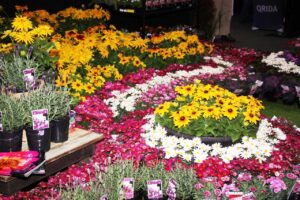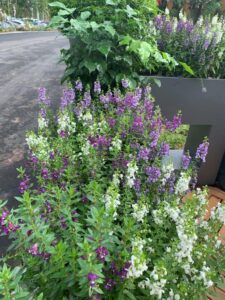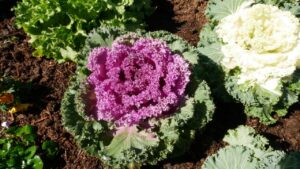
Annuals and biennial plants in garden design
By Patrick Regnault
Designing a garden requires the knowledge and flair to mix perennials to create a balanced effect. The use of seasonal colour in the form of short-lived annuals or biennials is often dismissed as a reserve of the amateur gardener, or to bring colour for a special occasion. Whilst both are correct assumptions, we should not dismiss the impact those colourful plants can have as fillers, to increase biodiversity, add interest to a design, and of course their use in pots.

The climatic zone the gardens are situated in will influence the type of plants you can use. Begonia semperflorens is a short lived annual in cold areas and a self seeding weed in others. The choice of these short-lived plants, often referred to as ‘beddings’, has to be carefully considered to avoid adding to the already existing introduced weed problem. On the other hand, some plants that are perennials in more temperate, dry areas of the country must be treated as short-lived perennials or even annuals in hot and humid places, such as lavender.
The use of beddings as space fillers is underestimated. They bring temporary colour, reduce weeds and are easy to remove as your perennials develop. They can last from three months to two years, although most of the time they will be looking awful towards their end of life. Using fillers avoids over-planting with perennials, and the chosen perennials can then express their full potential over time.
Annuals have biodiversity benefits in the short and long term. Being prolific bloomers they attract pollinators into the garden and if well-chosen and varied, as opposed to a mono-culture, they will also benefit arthropods and other microscopic life forms by shading the soil and keeping it cooler. They can attract beneficial insects that will control the “bad bugs”. Many beneficial insects will come if they have food for their larval stage, when they are the most efficient predators, and pollen for their adult stage. Attract the adults and you will get the larvae.
Another form of annual or seasonal plant are vegetables. Those too can be used within an ornamental setting, and in most garden styles and climatic conditions. The best ones to use are those with flowers or those with ornamental foliage such as chives, Swiss Chard, kale or even lettuce. Using edibles also increases the palette of seasonal colours and shapes you can add to your ornamental border.
Maintenance is an issue in all gardens. Reducing weeds, pests and diseases are a constant. The use of bedding plants can reduce weeds by limiting the amount of light to the soil surface. In my practice, I have noticed that if bedding plants are used, the owners are more likely to go into the garden to weed and notice the perennials around them. In short, colour attracts attention.
There is a trend back to adding colour in gardens. It may not be the end of the “green and white gardens” promoted by magazines but it may be the renaissance of colourful and more interesting designs. Planting with colour can be bold, at times perhaps too much, but it can also be subtle and charming, inviting the viewer to reveries and imaginings.

The most common use of bedding plants is in pots and hanging baskets. There is an art to creating beautiful pot plantings. Seasonal container gardening needs to be bold with colours and shapes; think Fauvist Art. Timidity does not work in container planting. Once again, mixing edibles and ornamentals can create stunning effects. The containers themselves can be a creative endeavour. Nearly anything can be used to grow your flowering plants. You can reserve an entire corner of the garden to container gardening. It does not have to be only pots and troughs; it can be recycled kitchen or bathroom fittings, refitted to grow a vast array of plant shapes and colours. It can be made to look mundane, dramatic or even comedic.
Annuals can be seeded, bought in punnets or in larger pot sizes. They are fun, practical and interesting, and they do not have to look like your grandma’s garden.
Patrick Regnault FAIH RH0062
Interactive Landscapes
E: patrickregnault@hotmail.com
